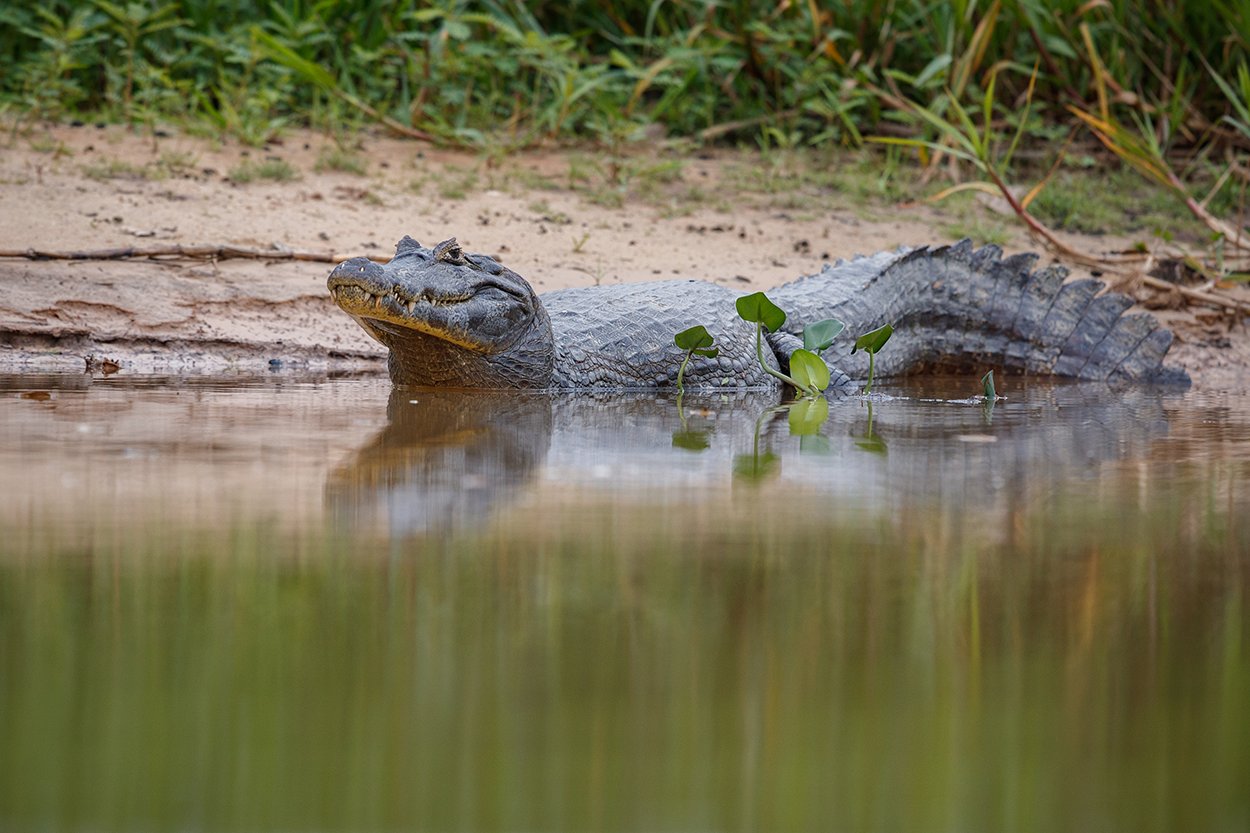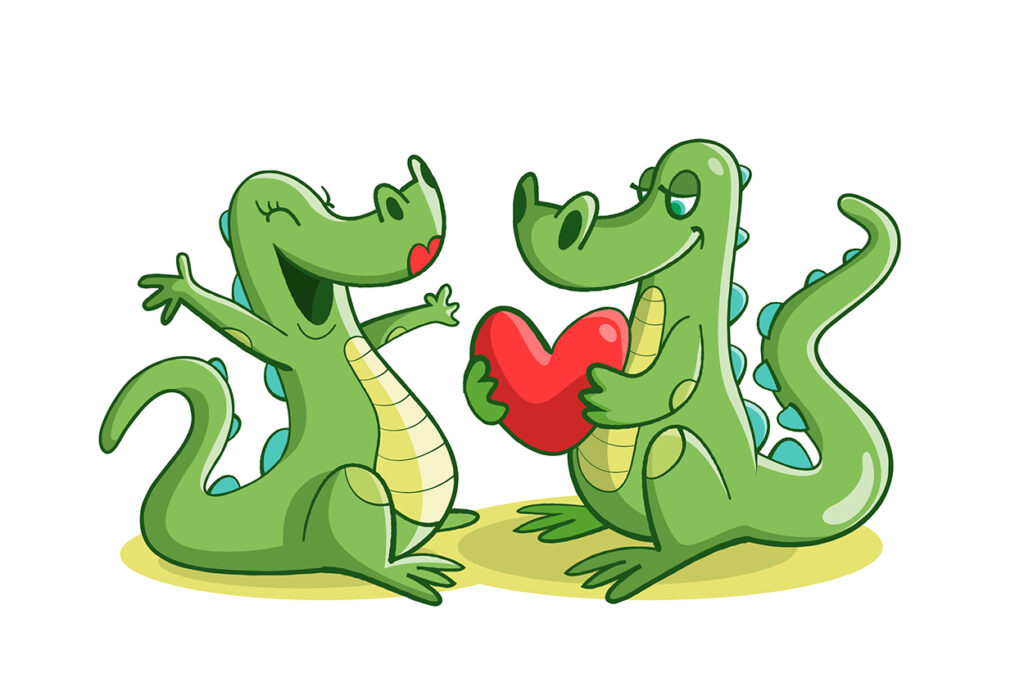Crocodiles are fascinating creatures that have been around for millions of years. Here are 30 interesting facts about crocodiles specifically chosen for children:
- Crocodiles have been on Earth for over 200 million years—since the time of the dinosaurs!
- They are excellent swimmers, using their strong tails to glide through water quickly.
- Crocodiles can live in freshwater and saltwater, but they prefer warm, tropical climates.
- Their eyes and nostrils are on the top of their heads, which lets them stay mostly hidden underwater while still being able to breathe and see.
- A group of crocodiles is called a bask when they are on land and a float when they are in the water.
- Crocodiles can hold their breath underwater for up to an hour while waiting for their prey.
- They have powerful jaws, with some crocodiles able to bite with a force of over 3,700 pounds per square inch!
- Their teeth are sharp and replaceable—if one tooth falls out, another grows in its place.
- Crocodiles can have up to 80 teeth at one time and may replace them thousands of times during their lifetime.
- Even though they have many teeth, crocodiles swallow their food whole instead of chewing.
- They are carnivores, meaning they eat only meat—like fish, birds, and even other animals.
- Crocodiles are ambush predators, which means they wait quietly for their prey and then attack suddenly.
- Some crocodiles can run fast on land for short distances, reaching speeds of up to 17 km/h (11 mph)!
- They are cold-blooded animals, meaning they rely on the sun to warm up their bodies.
- Crocodiles can go months without eating, especially after a big meal.
- They use their tongues to cool down by opening their mouths wide and sticking out their tongues.
- Baby crocodiles, called hatchlings, are born from eggs, and they are about the size of a pencil when they first hatch.
- Mother crocodiles protect their eggs fiercely, carrying them to the water in their mouths once they hatch.
- Crocodile eggs can take about 80-90 days to hatch, and the temperature of the nest determines if the babies will be male or female.
- Crocodiles make sounds called bellowing to communicate with each other, especially during the mating season.
- They have very good night vision, which helps them hunt in the dark.
- Crocodiles have a unique heart—they can control how blood flows through their bodies, helping them stay underwater for long periods.
- Saltwater crocodiles are the largest reptiles in the world, with some reaching over 6 meters (20 feet) long.
- The smallest crocodile species, the dwarf crocodile, only grows to about 1.8 meters (6 feet) long.
- Crocodiles shed tears when eating because the action of swallowing pushes tears out of their tear ducts.
- They have rough, scaly skin that protects them from injury and helps them blend into their environment.
- Crocodiles can regrow parts of their tail if it gets injured or lost.
- Despite their tough appearance, crocodiles can be quite gentle with their young, even carrying them in their mouths without harming them.
- They are found on five continents—Africa, Asia, North America, South America, and Australia.
- Crocodiles can live up to 70-100 years in the wild, making them one of the longest-living reptiles!
Now you know some amazing facts about crocodiles! These creatures have unique skills and adaptations that help them survive in the wild.

3 Bonus Facts
Here are three more bonus facts about goats for crocodiles with a bit more detail:
Crocodile Skin is Super Tough!
Crocodile skin is not just scaly—it’s incredibly strong! The tough outer layer is covered in hard, bony plates called osteoderms or scutes. These act like armor, protecting crocodiles from injury and attacks from other animals. The scales are arranged in patterns that help them blend into their surroundings, especially in murky waters. Crocodile skin is also waterproof, keeping them dry when they come out of the water. People have even used crocodile skin to make strong leather for bags and shoes. This armor-like protection helps crocodiles survive in the wild for many years.
Crocodiles Have an Amazing Immune System
Crocodiles live in some of the murkiest waters on the planet, yet they rarely get sick. How? It turns out that they have one of the strongest immune systems in the animal kingdom. Their blood contains powerful antimicrobial peptides that fight off infections and diseases. These natural “antibiotics” help crocodiles heal quickly from injuries and prevent infections, even in dirty environments filled with bacteria. Scientists are studying crocodile blood to better understand how it works, hoping to use it to develop new medicines for humans. This incredible immune system is just another reason crocodiles are such remarkable survivors.
Crocodiles Are Ancient Relatives of Dinosaurs
Crocodiles are often called “living fossils” because they have barely changed since the time of the dinosaurs. Their ancestors, called archosaurs, lived more than 200 million years ago and were part of a group that also included dinosaurs and birds. Over time, crocodiles adapted to life in water, developing the powerful jaws and strong tails we see today. While the dinosaurs went extinct, crocodiles survived thanks to their ability to adapt to different environments. Fossils show that prehistoric crocodiles were even bigger and more fearsome than the ones alive today, with some growing up to 12 meters (40 feet) long!
See also:


